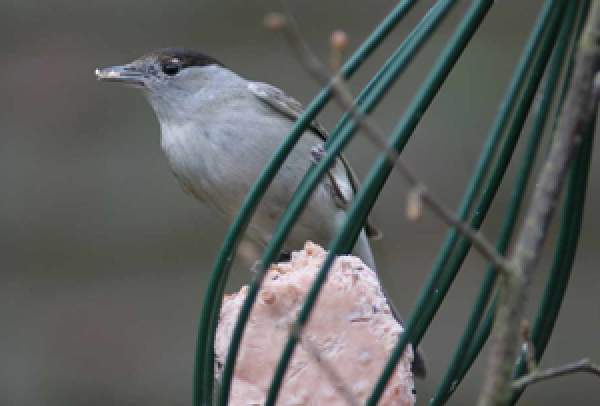Blackcap
Sylvia atricapilla

The Blackcap is a somewhat stocky warbler only slightly smaller than a Chaffinch in size. Both sexes are a dirty grey above. Males are dusky-grey below, while females and immatures are warmer buff-grey. Adult males display the black cap that gives the species its common name. Females have a warm-brown cap that is also shared by immature males. During the autumn, the immature males moult their warm-brown cap to reveal the black cap of an adult male.
Over recent decades, there has been a rapid increase in the numbers of Blackcaps wintering in Britain & Ireland, with most of these birds benefiting from the supplementary food being provided in gardens. Recent work has shown that these wintering birds are not British & Irish breeders. Instead, they are birds from the central European breeding population that have adapted their normal migratory strategy to use new wintering areas (migration in Blackcaps has a strong genetic component) in Britain & Ireland. The decision not to travel south across the Sahara Desert may have some clear benefits, boosting overwinter survival and leading to an increase in breeding success.
Blackcaps will breed in shrubby undergrowth and seem better adapted to use those small blocks of rough scrub that occur within suburban and even urban habitats than related warblers. During the winter months, the wintering birds can be quite sedentary, coming to regular sources of food like berries and fat. It is also at this time of year when feeding methods become increasingly diverse, with individuals feeding from bird tables as well as on the ground (in summer feeding takes place off the ground and up into the canopy).
Find out more about Blackcaps on BirdFacts and the Wider Countryside Report.






Share this page